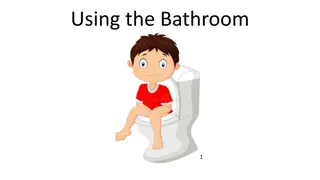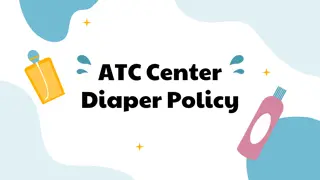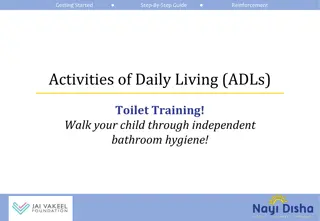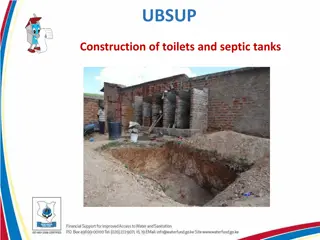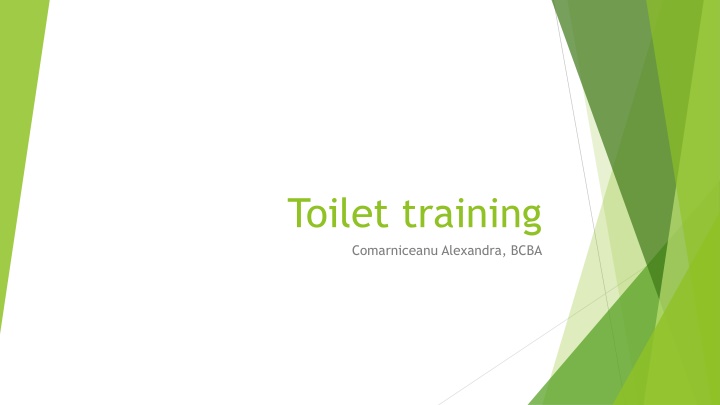
Effective Toilet Training Guidelines for Children
Learn how to initiate successful toilet training for your child by following these step-by-step guidelines provided by Alexandra Comarniceanu, BCBA. From collecting baseline data to using reinforcement techniques, this comprehensive approach will help you establish a successful toilet training routine.
Download Presentation

Please find below an Image/Link to download the presentation.
The content on the website is provided AS IS for your information and personal use only. It may not be sold, licensed, or shared on other websites without obtaining consent from the author. If you encounter any issues during the download, it is possible that the publisher has removed the file from their server.
You are allowed to download the files provided on this website for personal or commercial use, subject to the condition that they are used lawfully. All files are the property of their respective owners.
The content on the website is provided AS IS for your information and personal use only. It may not be sold, licensed, or shared on other websites without obtaining consent from the author.
E N D
Presentation Transcript
Toilet training Comarniceanu Alexandra, BCBA
Guidelines 1. Collect baseline data and establish an initial interval. 2. Depending on the child s age, decide if you will use a potty or an actual toilet. 3. Make sure that the child has no problems with sitting on the potty/toilet (if they have difficulties, condition the potty/toilet). 4. Select two reinforcers (a powerful and a moderate one). 5. Make sure you have a timer on your phone, so that you can use it during the training.
Start the actual toilet training -Select the initial time interval you will use: calculate the mean interval in baseline and add a short amount of time: for example, if the mean interval in baseline was 45 minutes, you can set up the initial time interval for 50 minutes. -The training begins as soon as the child wakes up and you take him to sit on the potty/toilet (for about 30 seconds). If he urinates during this interval, you praise and reinforce, using the most powerful reinforce of the two you have selected.
-Set up the timer on you phone. For example, if the time interval you have selected if 50 minutes, set up your timer so that it goes off after 25 minutes (half of the initial interval). This is because during the training it is important to reinforce both successful urination in the potty/toilet, and the fact that the child remains dry in the rest of the time. During the training, you will continuously observe the child and if you notice that he gives signals that precede urination or that he starts to urinate, you gently place him on the potty/toilet and you reinforce any successful urination.
The first time the timer rings (half interval) you go to the child, gently take his hand and place it to the front of his trousers, say Good job for being dry , and reinforce using the moderate reinforce you have selected. If at any moment the child has an accident and wets himself, we gently take his hand, place it at the front of his pants and say wet . After that, he needs to get undressed, put his wet clothes in the bin, get clean ones and get dressed (this process takes place independently or with as little help and attention as possible).
When the timer rings again, we take the child and place him on the potty for app. 30 seconds. We reinforce if he urinates and we allow him to stand up and leave if he does not urinate by the end of the 30 seconds interval. We repeat the process and continue until the child goes to bed. During the training, the only times the child can wear diapers is when he is sleeping. We plan to do the toilet training when we don t have to leave the house very often.
When the child has no accidents for a whole day, we can increase the time interval and continue the training. If the child is vocal, we will teach him to say pee when urinating (we need this step so that later he can request to go to the toilet). The toilet training is finished when the child has no more accidents and is able to request to go to the toilet, when necessary.





